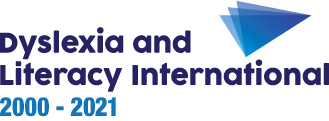Other areas of assessment
Many children with dyslexia have difficulties in other areas, particularly with rapid naming and short-term memory as well as working memory.
These abilities are essential to fluent reading, spelling and comprehension.
In longer sentences, readers need to quickly access words, and to memorise the beginning whilst processing the rest of the sentence to its end. The same applies to longer words.
There are different tests to examine these abilities.
The examples below belong to formal diagnosis procedures which require access to age-appropriate norms and the interpretation of completion strategies.
However, provided that you remain very careful in your interpretation of these tests, you may nevertheless find them useful in determining the strengths and weaknesses of a child you think may have dyslexia, and whose performance you wish to compare with other children in your classroom without dyslexia.
You may wish to use these tests as a classroom activity.
Rapid automatised naming
Rapid automatised naming involves naming very familiar objects (letters, digits, colour patches, pictures of objects) at speed.
Many scientific studies have shown that children with dyslexia take much longer to complete these tasks than children of the same age without dyslexia, even though they are only required to name about five basic stimuli.
Short-term memory
There are different tests to examine auditory and visual short-term memory:
- Auditory short-term and working memory
The most common task is to pronounce a series of digits of increasing length, for example 1,3; 5,2; 8,3,7; 2,9,6,5, with a one second pause between each digit.
The child is asked to repeat a first series of digits in the order given, and then another series of digits in the reverse order.
The test is stopped when the child makes two mistakes for a sequence of (x) units, and the number of digits up to that point (x – 1) is the short-term memory span.
In general, the span for the series in reverse order is two digits shorter than the span for the series in the given order. If the difference is noticeably bigger, it means that the child may have additional problems of sequencing the units to retain in short-term memory.
If you try this kind of test take care to say the sequence of digits in a monotone voice, and imagine that you are going to say one more digit after the last one. Make a pause of one second between each digit by counting ‘one’ in your head. This is to ensure that you are not giving the pupil acoustic clues which will help recall, and so bias his or her performance. One trick to let the child know when to start recalling the sequence is to tap on the table when you have uttered the whole sequence of digits to be recalled.
- Visual short-term memory
Several tests can be used to examine visual-attentional abilities, for example:
Copying test
The child is asked to copy a passage as quickly as possible, being timed, or to copy as much as possible of a passage within a certain amount of time (usually 2-5 minutes).
Although children without visual short-term memory problems should complete such a task rather quickly, effortlessly, and with no or few mistakes, children with visual short-term memory difficulties will tend to be much slower and may add, omit, reverse and/or substitute letters or words, or even leave out whole lines (compare examples of the additions made when copying the sentence ‘the quick brown fox jumps over the lazy dog’ in Section 2.3).
If you want to use this kind of test you can use any passage of a text, which may be rich in terms of sentence structures and punctuation (dialogues with speech marks, interrogative sentences, etc.), that is suited to the age and level of comprehension of the child. The text should be understood easily as it does not deal with comprehension.
Finding shapes amongst distractors
In this kind of test the child is asked to find a certain number of target objects among a series of distractors, or to find as many target objects as possible within a certain amount of time (usually 2 minutes).
Children with visual short-term memory difficulties usually make more mistakes of identification, and use poorer and more erratic strategies for systematic searching, than children without visual short-term memory difficulties.
Sequence comparison
The child is shown pairs of sequences of letters or digits and asked to say if both sequences of each pair are the same or different, and is timed.
Children without visual short-term memory difficulties should complete such a task quickly and accurately, whilst children with visual short-term memory problems tend to be much slower and to make mistakes.


